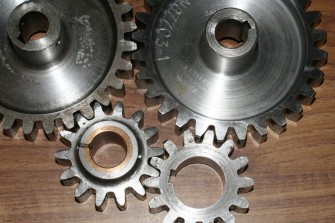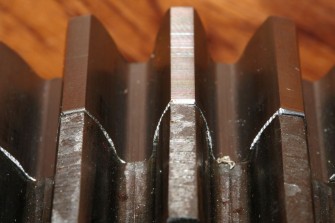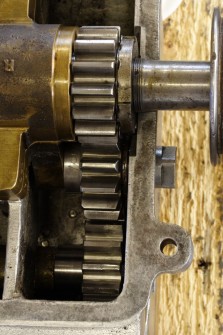What to look for when buying a 6hp Rover
Friday, October 22nd, 2010What to look for when buying a 6hp Rover
Unless the car comes with its original documentation it is difficult to establish when it was made. The early cars had a number of weaknesses and the model evolved in a number of ways. These changes could help to indicate the cars age if it can be established when they took place. Surviving cars may have had repairs early on which involved being fitted with a modified part, and some are an amalgamation of parts as a result of past restoration. If the car has been restored it is important to remember that glossy paintwork and new tyres do not mean that it will run well. The literature states that the cars were painted green (this seems to be Brunswick green, judging by some original paintwork that I discovered covered over on my car), pricked out in black with white lining (later this changed to just pricked out in black). The lining was in a simple style with no curly bits. The 100 guinea car was upholstered with red pergamoid, the ‘Special Finish’ version with green leather.
A good 6hp should start easily, usually on the second pull. Although Magneto ignition was an optional extra, in practice a trembler coil works better. the car should idle along at 22 – 24 mph on the flat, and flatten out at about 28 mph. It should do 50 -60 miles per gallon. The engine should run almost silently with just a slight ticking from the valves, any clacks or knocks indicate damage or wear. There should be little vibration from the engine if it is correctly balanced. Sadly, many cars have had pistons replaced but have not been rebalanced to suit the new piston. This causes vibration problems and damage to the crankshaft due to it flexing and needs to be rectified (see earlier article ‘The beginning’). Hill climbing should be very good (due to having three gears rather than 2 a 6hp Rover can outpace a 20hp model T Ford up a steep hill). The brakes should work well in both forward and reverse (unless they get very wet). Engaging any gear should be easy, with little noise from either gearbox or rear axle.
I have rarely seen parts worn out through use. Most damage seems to have been caused by lack of care and/or knowledge when trying to rectify some problem (probably quite a small problem) and only succeeding in making things worse. Special attention must be given to the oiling system of the engine/gearbox: it is a gravity fed system and the pipes must go to the right places and be free from even the slightest ups and downs.
Many cars have been put back on the road or run without any thought or care about what is happening to the internal parts of the engine. This neglect can cause rapid wear such as happened to my front timing gears. If the engine uses oil at a rate of more than a pint to 100 miles after it has be drained and filled with five pints of oil, and also smokes heavily with this amount of oil in, there is a risk of the timing idler gear running dry of oil and seizing because of the rapid depletion of oil. There is also a risk of rapid wear taking place due to lack of oil being fed to the front main bearing, which needs a sufficient quantity of oil to spill over and keep the gears lubricated.
Sometimes people use large quantities of plastic gasket when refitting the sump, this is bad engineering practice – small pieces of gasket material can easily block the pipes. The gears are very basic but it takes a considerable amount of work to achieve the correct amount of backlash, which should be no more than 4 to 5 thou between all three gears. Very accurate measurements must be taken between the crank, idler and camshaft before any gears are made.
A car that has been reinstated back to its original design should work extremely well, as DL 126 has done over several thousand miles since it was restored. When I bought this car there was evidence that it had done a considerable mileage in its life but there was no excessive wear, just damage caused by bodged ‘repairs’ and some metal fatigue that these ‘repairs’ had exacerbated.


